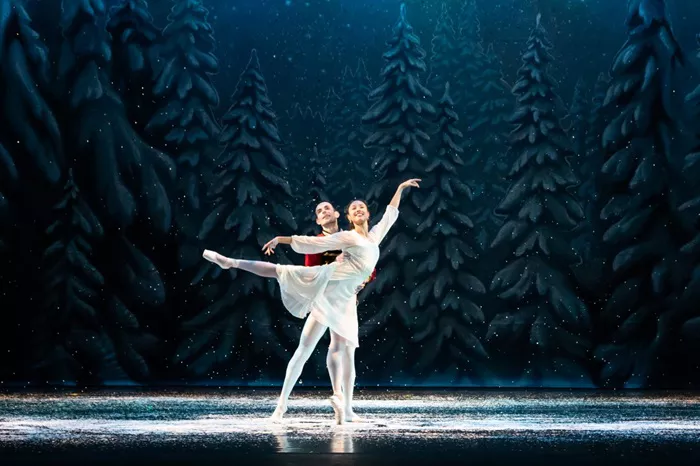The ballet “The Nutcracker” has become a timeless holiday tradition, enchanting audiences around the world with its magical story and iconic music. However, the question of who composed the original “Nutcracker” remains a subject of curiosity and debate among enthusiasts and scholars alike. In this article, we will delve into the history of “The Nutcracker,” exploring its origins and shedding light on the composer behind this beloved masterpiece.
The Birth of a Ballet Classic
“The Nutcracker” ballet is based on the story “The Nutcracker and the Mouse King” written by E.T.A. Hoffmann in 1816. Hoffmann, a German author and composer, crafted a fantastical tale that combined elements of fantasy, adventure, and romance, making it a popular source for artistic interpretation.
The ballet as we know it today, however, is primarily associated with the music of Pyotr Ilyich Tchaikovsky, a renowned Russian composer of the 19th century. Tchaikovsky’s contributions to “The Nutcracker” not only defined its musical identity but also elevated it to the status of a cultural phenomenon.
Pyotr Ilyich Tchaikovsky: The Maestro Behind the Music
Pyotr Ilyich Tchaikovsky was born on May 7, 1840, in Votkinsk, Russia. From a young age, he displayed exceptional musical talent and received formal training in music theory and composition. Tchaikovsky’s works are celebrated for their emotional depth, melodic richness, and masterful orchestration, establishing him as one of the most influential composers of his time.
In 1891, Tchaikovsky was commissioned by Marius Petipa, the renowned choreographer of the Imperial Ballet in St. Petersburg, to compose the music for a new ballet based on Hoffmann’s “The Nutcracker.” Tchaikovsky embraced the challenge, pouring his creativity into crafting a score that would capture the enchanting essence of the story.
The Composition Process and Musical Themes
Tchaikovsky’s composition process for “The Nutcracker” involved meticulous attention to detail and a deep understanding of balletic structure. He composed the score over a period of several months, weaving together intricate melodies, lively dance rhythms, and evocative themes that mirrored the narrative’s whimsical and magical elements.
One of the most iconic pieces from “The Nutcracker” is the “Dance of the Sugar Plum Fairy,” a delicate and ethereal composition that accompanies the enchanted realm of the Land of Sweets. Tchaikovsky’s use of celesta, a keyboard instrument with a bell-like sound, adds a mystical quality to this piece, enhancing its otherworldly charm.
Another standout composition is the “Waltz of the Flowers,” a vibrant and exuberant dance that captures the beauty and grace of the floral kingdom within the ballet’s story. Tchaikovsky’s orchestration skillfully blends strings, woodwinds, and brass instruments to create a lush and captivating musical landscape.
Premiere and Initial Reception
“The Nutcracker” had its premiere on December 18, 1892, at the Imperial Mariinsky Theatre in St. Petersburg, Russia. The ballet’s debut was met with mixed reviews, with some critics praising Tchaikovsky’s music while others were less enthusiastic about the production as a whole.
Despite the initial reception, “The Nutcracker” gradually gained popularity through subsequent performances and adaptations. Over time, it evolved into a cherished holiday tradition, captivating audiences of all ages with its enchanting story, mesmerizing choreography, and of course, Tchaikovsky’s timeless music.
Legacy and Continued Influence
Tchaikovsky’s “The Nutcracker” has left an indelible mark on the world of ballet and classical music. Its enduring popularity has led to numerous adaptations, reinterpretations, and reimaginings across different artistic mediums, cementing its status as a cultural treasure.
Beyond its entertainment value, “The Nutcracker” also serves as a showcase for Tchaikovsky’s mastery of musical storytelling. Through his expressive melodies, dynamic rhythms, and rich orchestration, Tchaikovsky transports listeners into a magical realm where dreams come alive and imagination knows no bounds.
Conclusion
In conclusion, the question of who composed the original “Nutcracker” leads us to the remarkable collaboration between E.T.A. Hoffmann, whose imaginative story laid the foundation, and Pyotr Ilyich Tchaikovsky, whose musical genius brought that story to life on the ballet stage. Together, they created a timeless masterpiece that continues to enchant and inspire audiences worldwide.
As we celebrate the enduring legacy of “The Nutcracker,” let us also recognize the power of artistic collaboration to transcend boundaries, ignite imagination, and create works of art that stand the test of time. In the realm of ballet and music, “The Nutcracker” remains a shining example of the magic that unfolds when creativity, talent, and passion unite in harmony.

